Ok, maybe that title is a little overly dramatic. I have always wanted to design a shawl with a ruffle, and wanted to create something with cables just as a decorative edging instead of allover fabric. So I designed my cable motif and knit up a swatch with a nice ruffled edge. I got the approval from Knitscene and set to work with the calculations for my pattern. After working up the calculations my eyes practically bulged out of my head. Cast on 884 stitches. I thought to myself, that can’t possibly be right! I did the calculations again. Still the same. I stared down at my handwritten scribbles to see if I had made some silly error but couldn’t find one. How could I possibly need to cast on so many stitches for a shawl about 68” wide at the top? Then I really thought about that ruffle. I sew occasionally, and whenever I have sewn a ruffle I have started with a very wide piece of fabric then gathered it up at the top into a much narrower width. Knitting a ruffle is no different; you start off with a very wide piece and make it much narrower. But who, besides me, would want to cast on so many stitches? I made another swatch with a smaller ruffle, but it just didn’t look right. So now I had a dilemma. Do I sacrifice the integrity of the design to make a smaller (and perhaps more appealing?) number of cast on stitches? Or do I keep it the way I like it and encourage knitters to slog through the cast on and first couple of rows?
I did a quick search on Ravelry for ruffled shawls. I thought I couldn’t possibly be the first person to think that a ruffle would look fabulous at the bottom of a shawl. I came across a free pattern of a lovely shawl worked in laceweight yarn that had a very full ruffle at the bottom. Since it was free I was able to look at the stitch counts. Unlike my pattern, this one was worked from the top down, so the ruffle was the last part worked. That ruffle had an ending stitch count of over 1000 stitches. Yikes. Well, then I didn’t feel so bad. There were quite a few projects linked to this pattern, so I started looking at the project notes to see if there were any complaints about working such a large number of stitches. I didn’t read all the notes, but from what I saw there wasn’t a single complaint. I decided it was possible, and hopefully there are knitters out there willing to work through a few seemingly endless rows to end up with a lovely result.
So I went for it and kept my design just the way it was. Yes, the cast on was boring. I worked on it over the span of a few evenings while watching Merlin on Netflix. I laughed to myself and thought, well at least I didn’t require a long tail cast on for so many stitches! I made little loops of yarn (a replacement for removable stitch markers) and placed them every 50 stitches so that I didn’t lose count. Yes, the first two rows were boring. But then, on the third row I did the first set of decreases and I thought, hey this isn’t too bad. By the end of the ruffle I had decreased over 300 stitches and it wasn’t bad at all. If you have ever worked a shawl from the bottom up, it is somewhat rewarding to get closer and closer to the end because your rows get shorter and shorter. Once you finish the border section, the body of the shawl works up amazingly fast since it is worked in short rows. In the end, I realized that I used up about 700 yards of yarn. That’s less yarn than a sweater, and a pretty typical amount of yarn for a big shawl. Emmylou is a lesson in perseverance. I hope you love the design as much as I do, and are willing to work through those first few rows to get to the end result.
Here are a couple of my photos of Emmylou

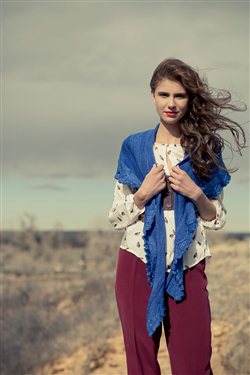
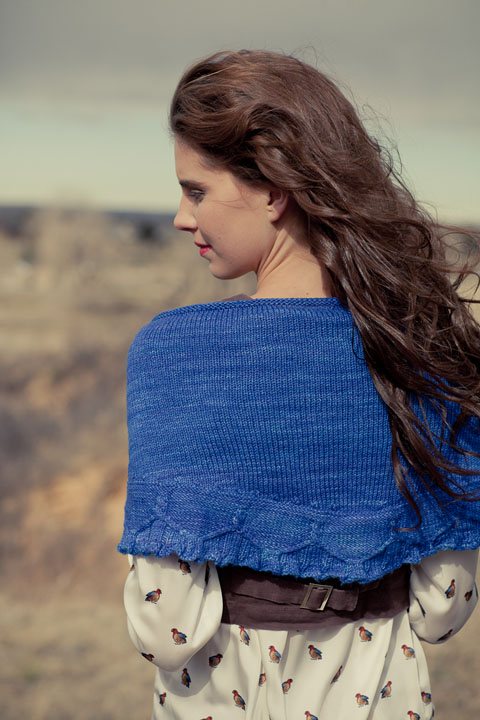
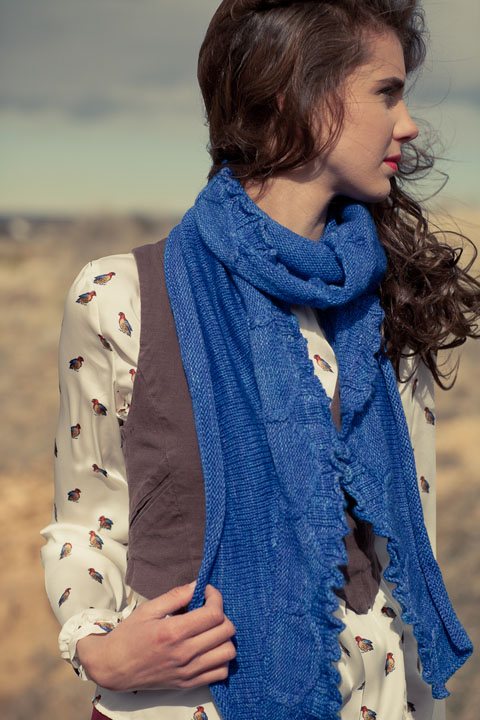
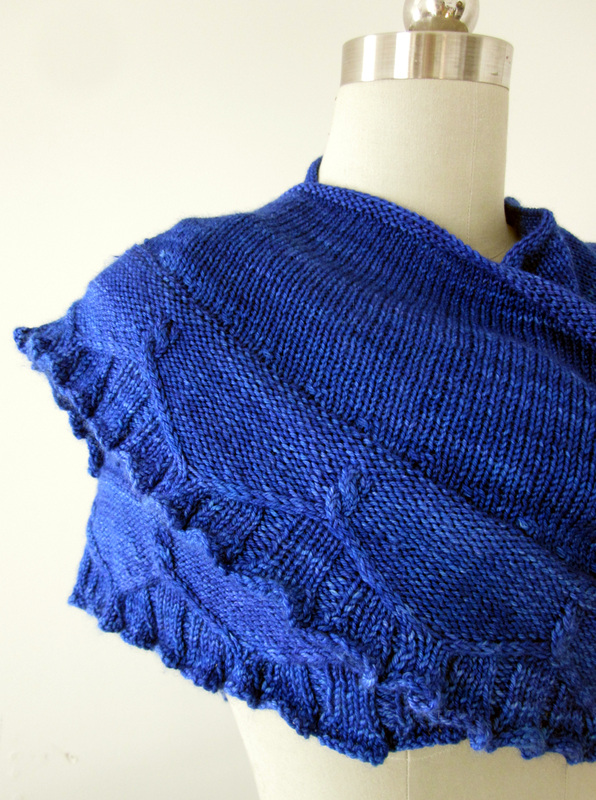
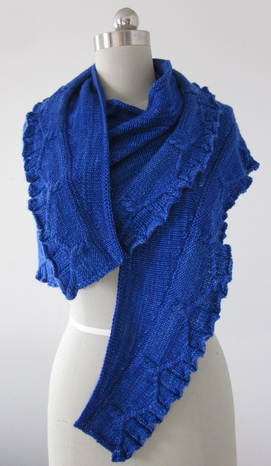

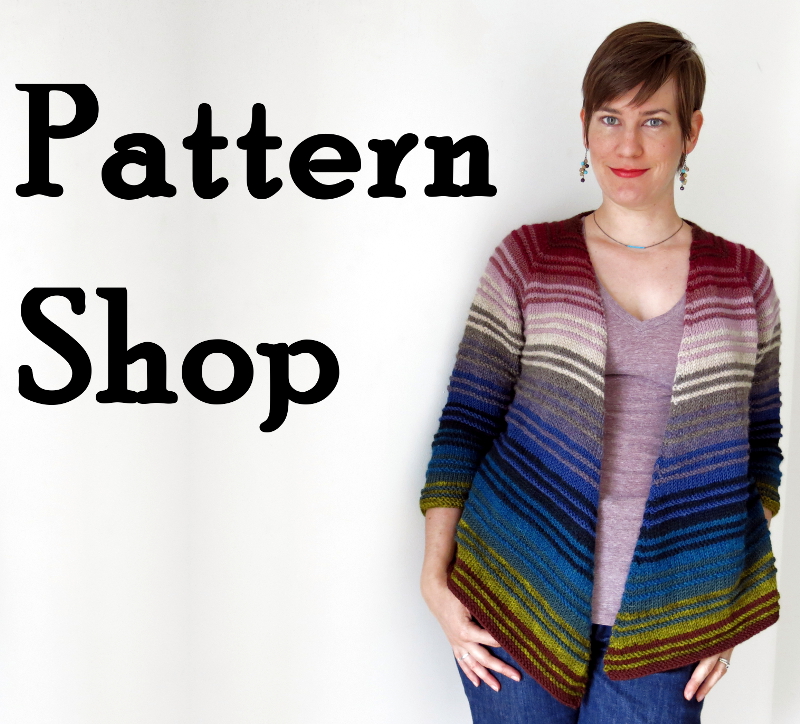
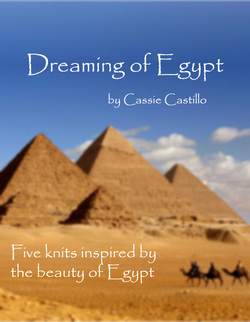
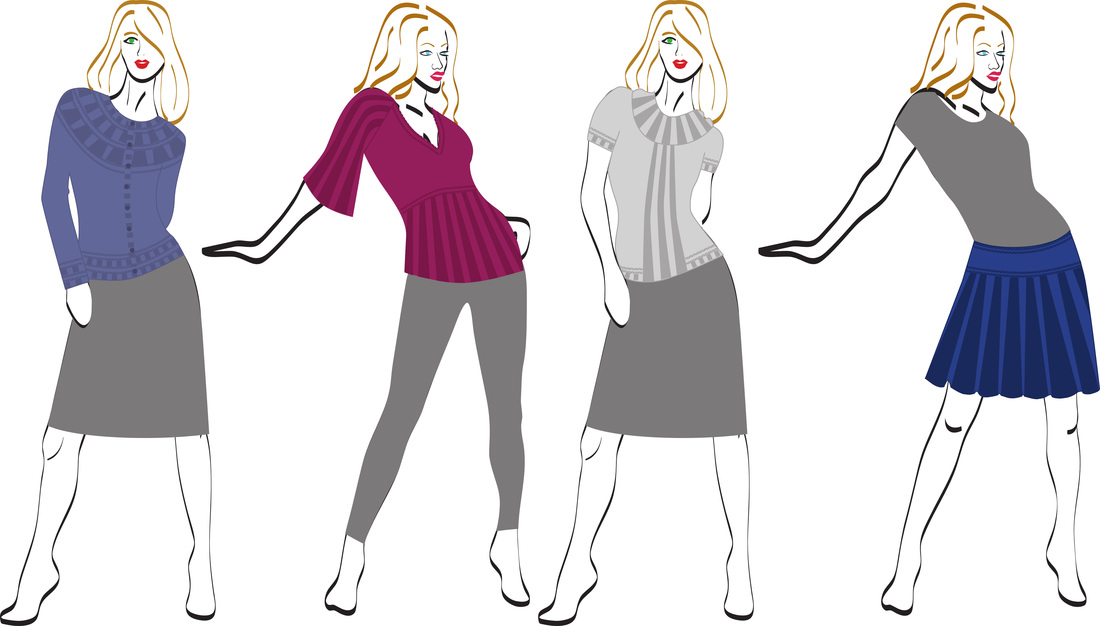
 RSS Feed
RSS Feed
